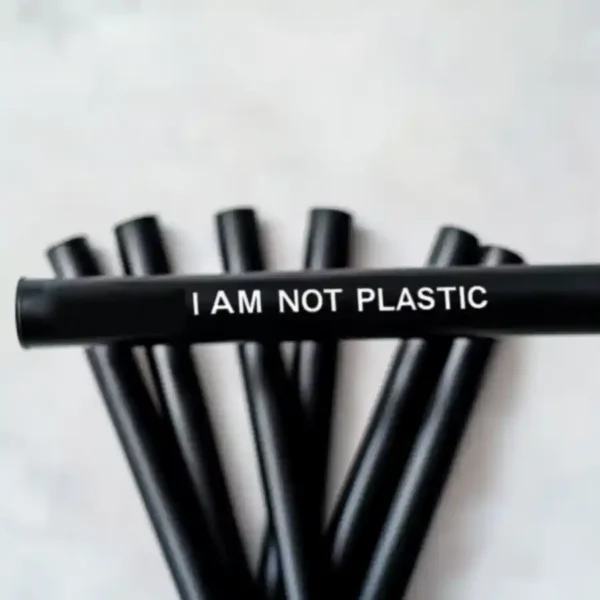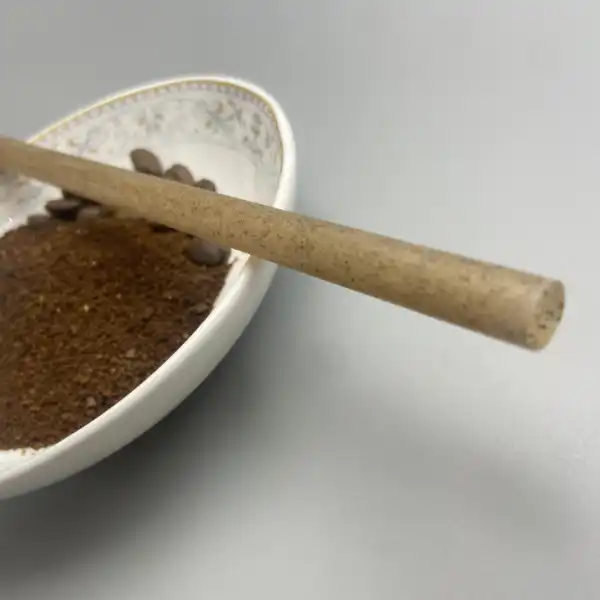
Understanding the eco-friendly boba straw market
The Rise of Eco-Conscious Consumers
Today’s consumers prioritize brands aligned with their values. Over 60% of global shoppers prefer businesses actively reducing their environmental impact. Sustainable straws, particularly those made from sugarcane or bamboo, cater to this demand by offering plastic-free alternatives that align with a zero-waste lifestyle. Your eco-friendly sugarcane straws are a perfect example of this trend.
Key Trends Driving Adoption:
- Government Regulations: Over 127 countries have implemented partial or full bans on single-use plastics.
- Corporate Sustainability Goals: Businesses increasingly adopt eco-friendly materials to meet Environmental, Social, and Governance (ESG) criteria.
- Consumer Loyalty: 73% of millennials are willing to pay more for environmentally friendly products. This presents a significant market opportunity for businesses offering premium, sustainable alternatives.
Effective Marketing Strategies for Your Eco-Friendly Sugarcane Straws
1. Craft a Compelling Brand Story
Highlight your commitment to sustainability through compelling storytelling. For example:
- Share your company’s journey towards adopting sustainable practices, emphasizing the motivations and challenges overcome. Transparency builds trust.
- Emphasize partnerships with ethical suppliers or local farmers, showcasing your commitment to fair trade and reducing your carbon footprint. Provide details about your supply chain.
- Use high-quality visuals, such as videos demonstrating the biodegradability of sugarcane straws compared to the persistence of plastic in the environment. Show the full lifecycle, from growth to decomposition.
Actionable Tip: Integrate keywords like “sustainable business practices,” “eco-conscious marketing,” “biodegradable straws,” and “plastic-free alternatives” into your website copy, social media bios, and all marketing materials. Use these terms consistently for SEO optimization.
2. Leverage Social Media & Influencers
Platforms like Instagram and TikTok are ideal for showcasing eco-friendly campaigns. Collaborate with influencers who advocate for green consumer trends to amplify your reach.
- Host engaging giveaways featuring branded sugarcane straw sets, encouraging user-generated content and social sharing.
- Post high-quality user-generated content (UGC) of customers using your straws at cafes or events. Showcase diverse settings and demographics.
- Run targeted social media advertisements focusing on specific demographics interested in sustainability.
Case Study: A coastal café saw a 40% increase in social media engagement after partnering with eco-influencers to promote its switch to sugarcane straws. This demonstrates the power of influencer marketing in reaching a target audience.
3. Optimize Eco-Friendly Packaging Design
Sustainable packaging reinforces your brand’s mission.
- Use minimalist designs with recycled or plant-based materials. Clearly display the eco-friendly attributes of the packaging.
- Add QR codes linking to educational content about sugarcane straw benefits, providing more information about your sustainability initiatives.
Your Eco-Friendly Sugarcane Straws: Sustainability and Your Business
Proactively addressing potential customer concerns is crucial for successful marketing. This adds value and transparency.
- Clearly communicate the environmental benefits of your sugarcane straws, highlighting their biodegradability and compostability compared to plastic alternatives.
- Consider using compostable or recyclable packaging to further enhance the product’s eco-friendly appeal.
Pro Tip: Include phrases like “plastic-free alternatives,” “zero-waste lifestyle,” “compostable,” and “biodegradable” on packaging to resonate with eco-conscious shoppers.
Educate your customers about the sustainability of your #### sugarcane straws. Highlight the eco-friendly nature of the product and its positive impact on the environment. Emphasize the reduced environmental footprint compared to plastic straws.

Your Eco-Friendly Sugarcane Straw Solution
By implementing a sugarcane straw sorting system, this café achieved a 35% reduction in landfill fees. This cost savings directly impacts profitability. Furthermore, the café attracted environmentally conscious patrons, boosting sales and reinforcing its brand image as a responsible business. This case study highlights the dual benefits of reduced operational costs and enhanced brand reputation. Your business can achieve similar sustainability goals.
Enhancing Your Eco-Friendly Sugarcane Straw Marketing Strategy
Deep Dive into Consumer Behavior
Understanding consumer psychology is paramount. A 2023 Nielsen report indicates that 81% of global consumers believe companies should actively contribute to environmental improvement. This is particularly pronounced among Gen Z and Millennials, who are more likely to switch brands based on sustainability.
Actionable Insight:
Conduct thorough market research. Surveys, focus groups, and social media listening provide valuable insights into your target audience’s sustainability priorities. Tailor your messaging to resonate with their specific concerns and preferences. For example, highlight the compostability aspect for environmentally conscious consumers, while emphasizing durability for those prioritizing functionality.
Leveraging Data and Analytics
Data-driven marketing is essential. Tools like Google Analytics and social media analytics provide crucial performance metrics. Monitor key indicators such as engagement rates, click-through rates, and conversion rates to optimize campaigns.
Case Study:
A beverage company employed A/B testing to compare marketing messages. Highlighting compostability resulted in a 20% higher conversion rate than focusing solely on durability. This underscores the importance of data-driven decision-making in refining marketing strategies.
Building Partnerships for Greater Impact
Collaborating with other eco-conscious brands amplifies your message and builds credibility. Partner with organizations sharing your values. Co-host events or sponsor eco-friendly initiatives to increase brand visibility and demonstrate your commitment to sustainability.
Example:
A coffee shop partnered with a local environmental non-profit to organize a beach cleanup, generating positive publicity and strengthening community ties. This synergistic approach enhances brand image and fosters positive consumer perceptions. Event attendees received complimentary sugarcane straws, resulting in significant media coverage, thereby enhancing brand visibility and your #### sustainability initiatives.
Incorporating Sustainability into Your Brand Identity:
Sustainability must be integral to your brand identity, not merely a marketing ploy. Eco-friendly practices should permeate all your business operations, from sourcing to waste management. Transparent communication of these efforts builds customer trust and loyalty. Your commitment to sustainability should be evident in every aspect of your business.
Actionable Insight:
Develop a comprehensive sustainability report detailing your environmental impact, targets, and accomplishments. Publish this report on your website and social media platforms to demonstrably showcase your commitment. Include specific metrics (e.g., reduced carbon footprint, waste diversion rate) and quantifiable goals (e.g., 20% reduction in water usage by 2025).

Using sugarcane as a raw material for your eco-friendly products is a great way to demonstrate your commitment to sustainability.

Frequently Asked Questions About Sugarcane Straws
Q: How durable are your sugarcane straws?
Our sugarcane straws are designed for durability. They are significantly stronger than paper straws and can withstand repeated use. We offer a free replacement guarantee for damaged straws.
Q: How much do your sugarcane straws cost?
While the initial cost may be slightly higher than plastic straws, the long-term cost savings are significant. Our bulk discounts and subscription services make them more affordable. Plus, the environmental benefits are invaluable.
Q: How long do sugarcane straws last?
A: Sugarcane straws remain functional for up to 18 hours in beverages and fully decompose within 60 days, significantly reducing environmental impact.
Q: Are they cost-effective for small businesses?
A: Absolutely. Bulk orders can reduce per-unit costs by 30–50%, often making them competitively priced with plastic straws, especially at scale. Negotiating favorable terms with suppliers is crucial for maximizing cost savings.
Q: How do I source ethical suppliers?
A: Prioritize suppliers with certifications like FSC (Forest Stewardship Council) or B Corp status, ensuring sustainable and responsible sourcing practices throughout the supply chain. This transparency builds trust with consumers concerned about ethical sourcing.
Q: How can I showcase my eco-friendly sugarcane products?
Showcase your eco-friendly sugarcane products by highlighting their sustainable production process and the positive environmental impact they have. Use clear and concise language to explain the benefits of choosing your products over less sustainable alternatives.
Q: What are the benefits of using sugarcane for eco-friendly products?
Sugarcane is a rapidly renewable resource, making it an excellent choice for eco-friendly products. It’s also biodegradable, further reducing its environmental impact. Highlighting these benefits in your marketing materials will resonate with environmentally conscious consumers.







